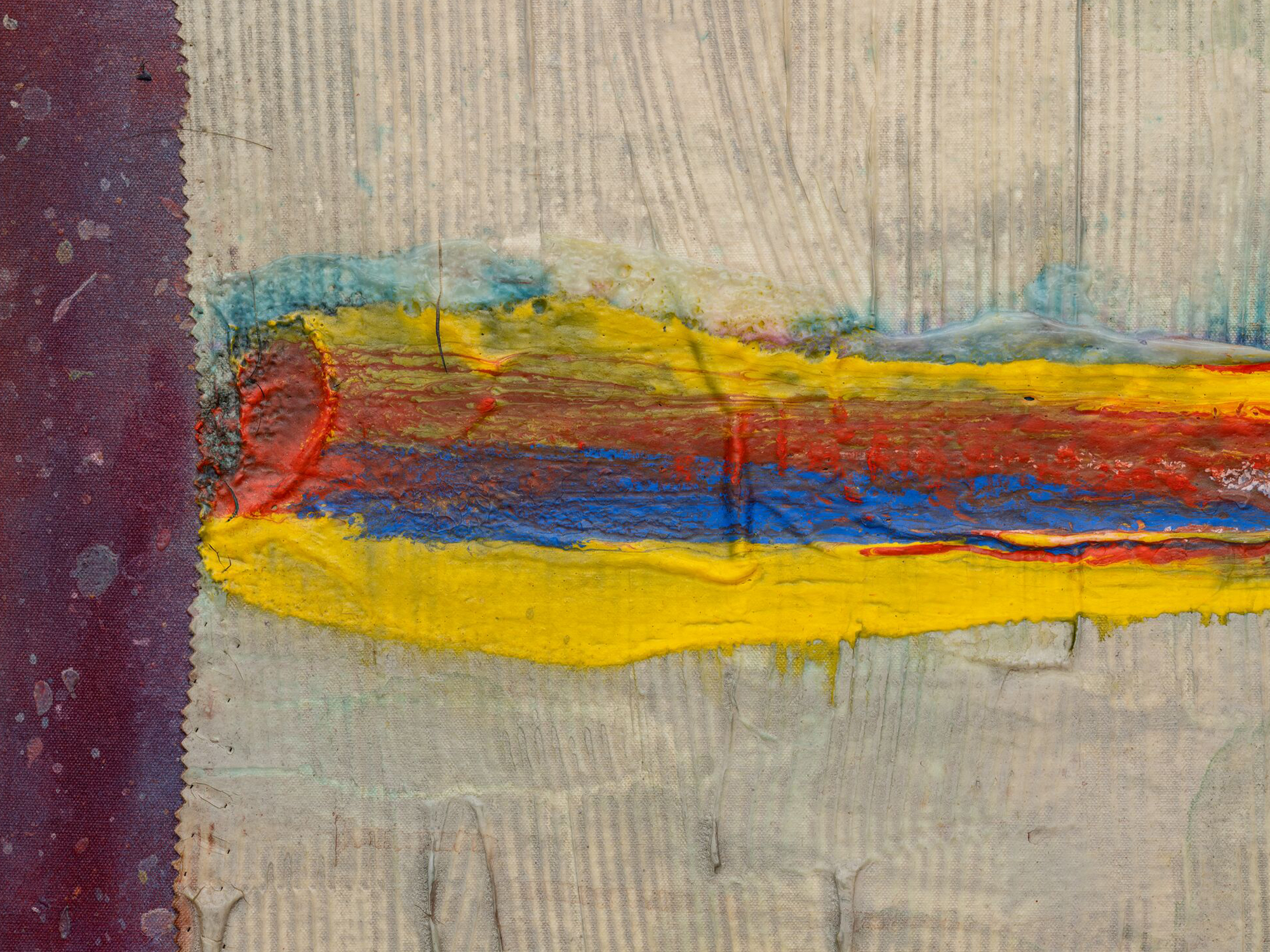Frank Bowling
Crossings: East West Tunnel
Crossings: East West Tunnel
Viewing location: London
2011
Acrylic and acrylic gel on canvas with marouflage
80.3 x 70 cm / 31 5/8 x 27 1/2 in
86 x 76 x 4.5 cm / 33 7/8 x 29 7/8 x 1 3/4 in (framed)
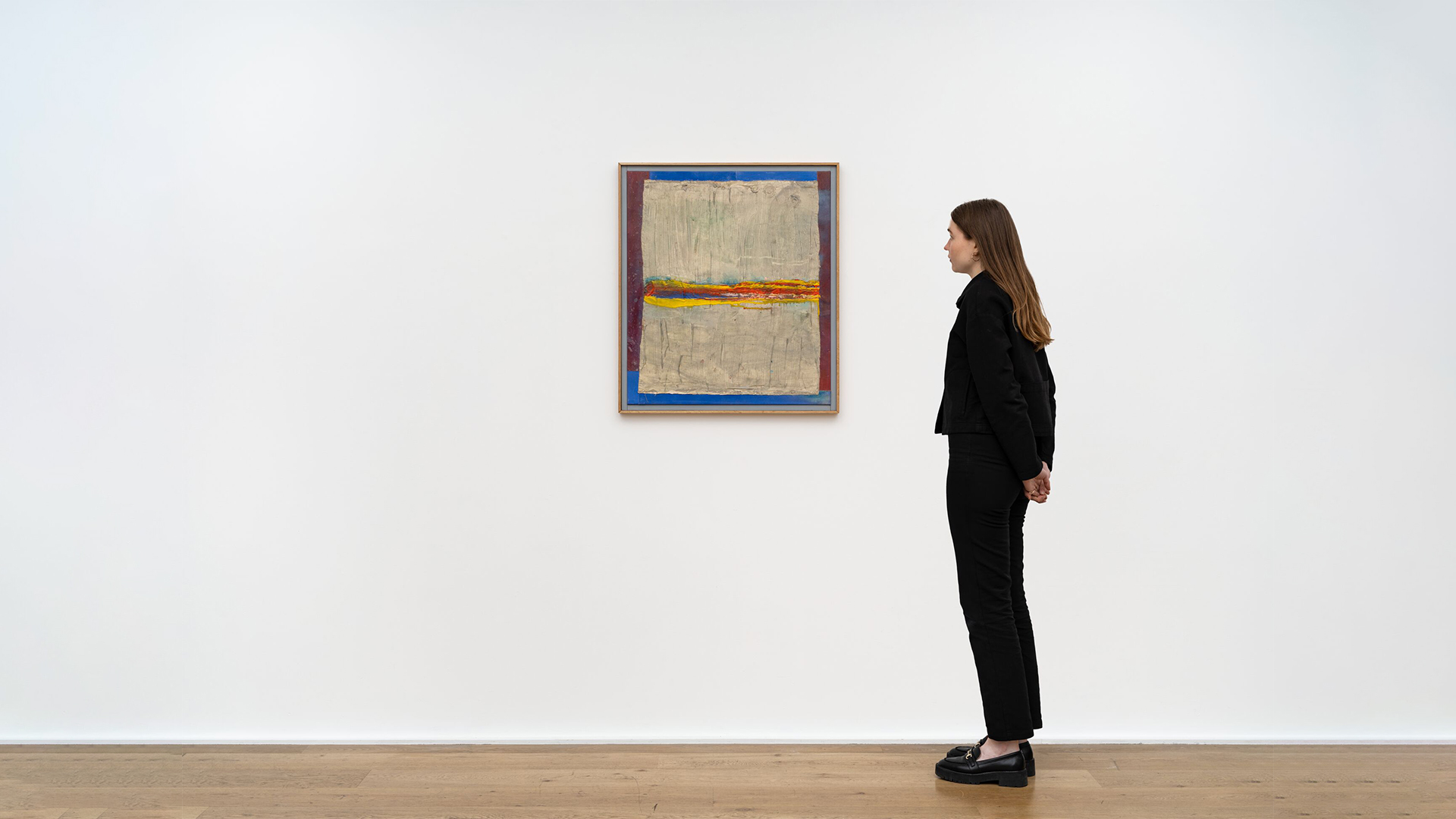
A remarkable late work, ‘Crossings: East West Tunnel’ (2011) is an outstanding example of Frank Bowling’s ‘Crossing’ series and his ongoing exploration of the materiality of paint. Sitting against a pale, textured backdrop—comprised of acrylic gel coated with light blue and turquoise washes—bursting blue, yellow and red bands dissect the center of the canvas. Bowling’s hallmark use of marouflage, which he began employing as a structural solution during the 1980s, frames the composition with contrasting strips of secondary canvas that form a border around the edges of the work.
Born in Guyana (then British Guiana) in 1934, Bowling travelled to London in 1953 to study at the Royal College of Art alongside contemporaries such as David Hockney and R.B. Kitaj. During the mid-1960s, he moved to New York and away from figurative painting toward large-scale, lyrical abstractions. Later, he would divide his time between his London and New York studios. Memories of each place underscore Bowling’s practice, which combines a highly personal take on American Color Field painting with a long-standing interest in British art, notably the work of Francis Bacon and J.M.W. Turner.

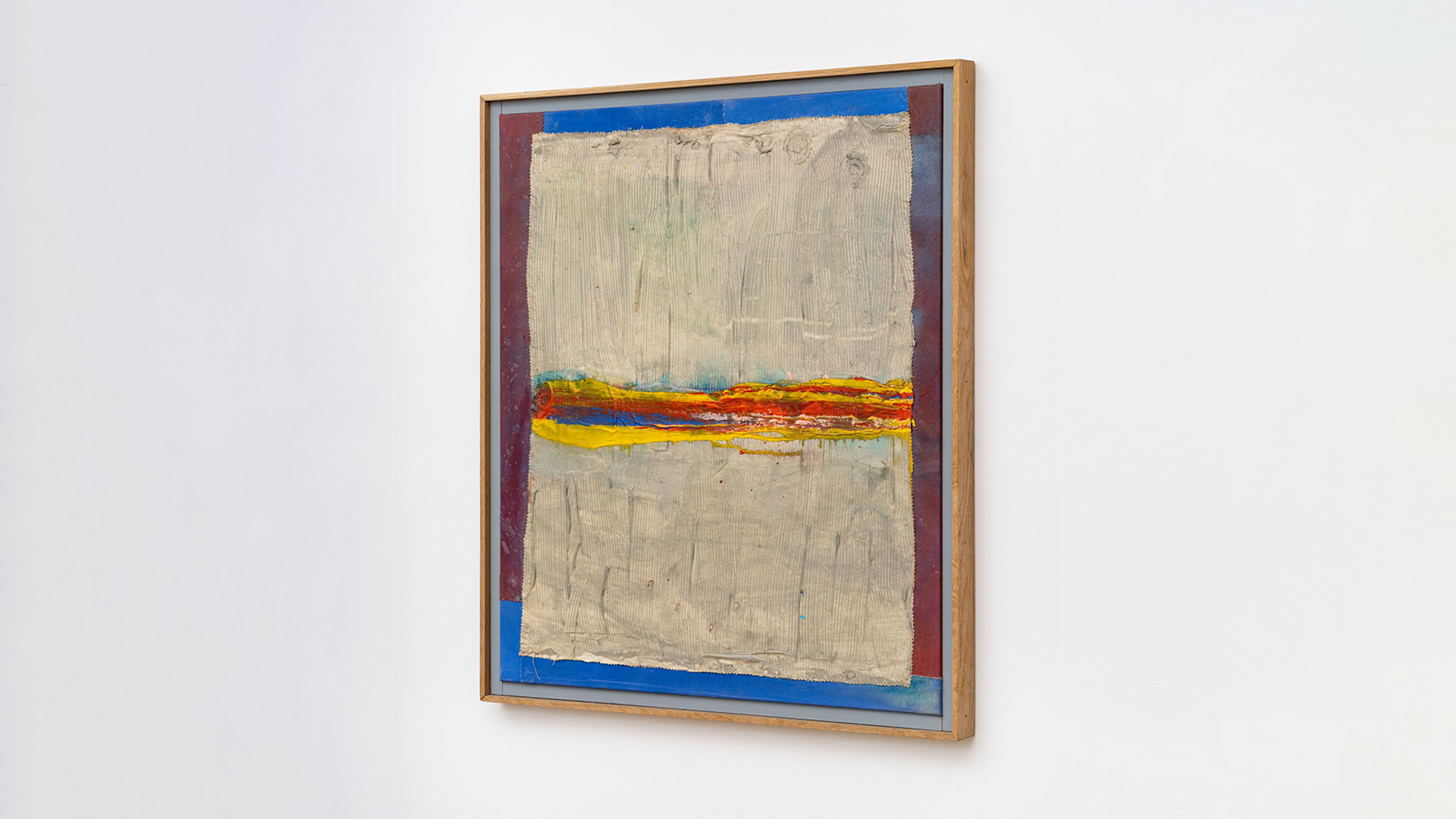
Over the last two decades, Bowling has become increasingly experimental, combining different styles, techniques, and formats from his previous series. The horizontal drips, which guide the viewer’s gaze across the center of the composition, are a nod to his ‘Poured Paintings’ from the 1970s while the straight yet jagged lines that comprise the background recall his ‘Zipper’ paintings from 2009. These experimentations with acrylic paint—staining with pure color, building up thick layers with palette knives, and dripping diluted washes of color across his canvases—capture Bowling’s profound understanding of the possibilities and nuances of his medium.
As disparate as his techniques, Bowling’s titles reference everything from the names of family members and friends to memories and political events. As Bowling explained, he names his works once they are finished, using the title to ‘try to reconnect it to what happened during my actual making of the work.’ [1] In ‘Crossings: East West Tunnel,’ Bowling alludes to geographical associations, reflecting on the scale and scope of a prodigious career that has unfolded while crisscrossing the Atlantic Ocean. For Elena Crippa, Bowling’s titles ‘act as riddles,’ and are part of the artist’s strategy ‘of resisting being defined and confined by language, of standing off against forms of control and oppression. His, after all, is a poetic language which, by definition, use and combines words in order to maintain the overall meanings as multiple and fluid.’ [2]

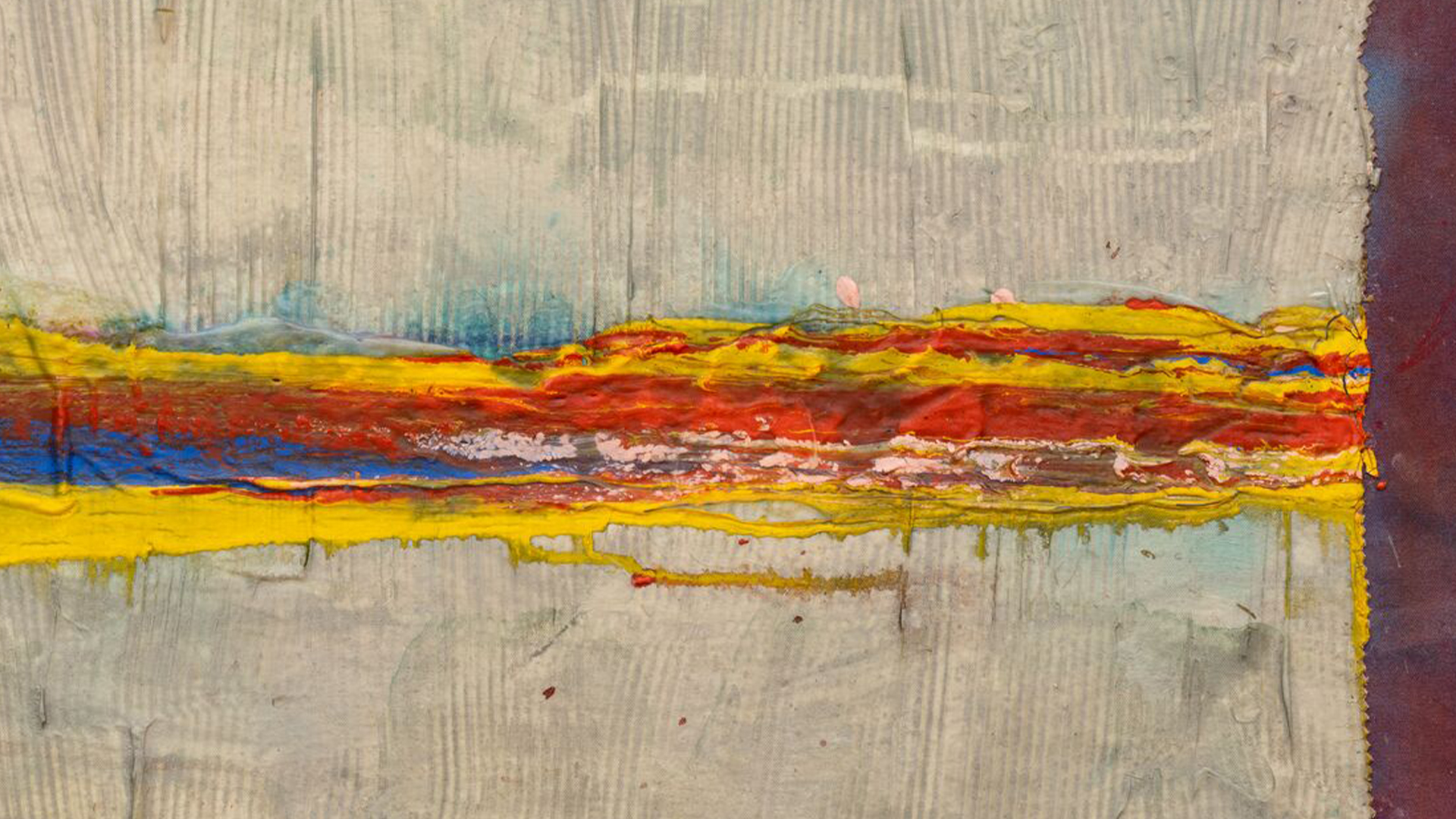
A complex synthesis of transatlantic influences and autobiographical details, Bowling’s relentlessly innovative work continues to push the boundaries of painting. Accordingly, ‘Crossings: East West Tunnel’ captures Bowling’s perpetual experimentation as well as his invitation of chance and ceaseless inquiry into the materiality of paint, which positions him among the more preeminent Post-War painters working today.
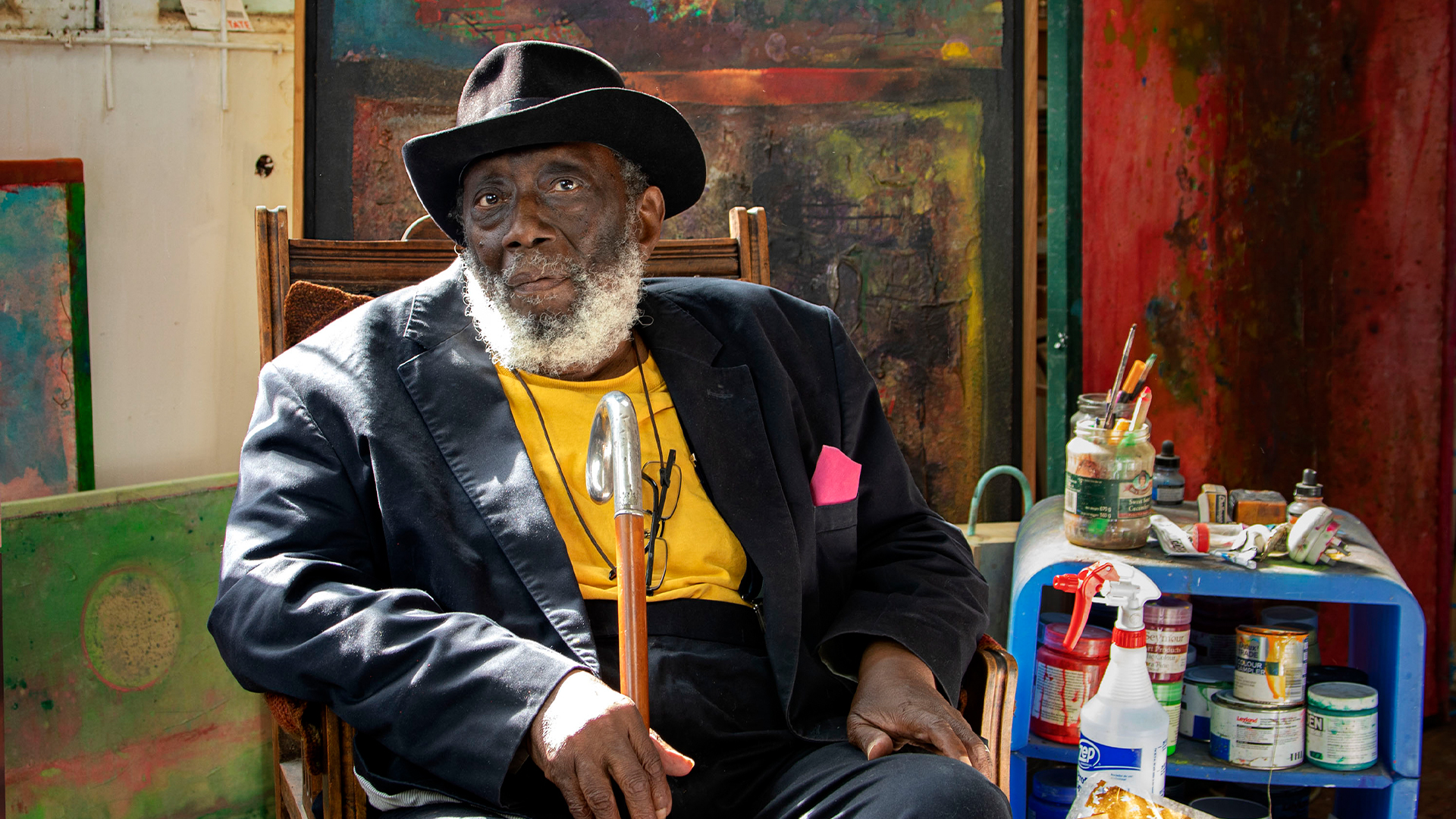
About the artist
 Over the course of six decades, Frank Bowling has relentlessly pursued a practice which boldly expands the possibilities and properties of paint. Ambitious in scale and scope, his dynamic engagement with the materiality of his chosen medium, and its evolution in the broad sweep of art history, has resulted in paintings of unparalleled originality and power. Bowling has been hailed as one of the foremost British artists of his generation. Born in Guyana in 1934, he arrived in London in 1953, graduating from the Royal College of Art with the silver medal for painting in 1962. By the early 1960s, he was recognized as an assured force in London’s art scene. During this period, his highly individual language of painting, which emerged from expressionistic figuration and pop art, encompassed autobiographical elements and the artist’s socio-political concerns.
Over the course of six decades, Frank Bowling has relentlessly pursued a practice which boldly expands the possibilities and properties of paint. Ambitious in scale and scope, his dynamic engagement with the materiality of his chosen medium, and its evolution in the broad sweep of art history, has resulted in paintings of unparalleled originality and power. Bowling has been hailed as one of the foremost British artists of his generation. Born in Guyana in 1934, he arrived in London in 1953, graduating from the Royal College of Art with the silver medal for painting in 1962. By the early 1960s, he was recognized as an assured force in London’s art scene. During this period, his highly individual language of painting, which emerged from expressionistic figuration and pop art, encompassed autobiographical elements and the artist’s socio-political concerns.
[1] Frank Bowling, ‘Frank Bowling,’ Government Art Collection (accessed 4 May 2022).
[2] Elena Crippa, ‘Frank Bowling,’ London/UK: Tate Publishing, 2019, p. 17.
Portrait of Sir Frank Bowling, 2020 © Frank Bowling. All Rights Reserved, DACS 2022. Photo: Sacha Bowling
All artwork images © Frank Bowling. All Rights Reserved, DACS 2022




